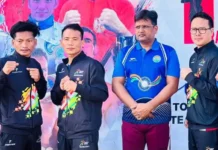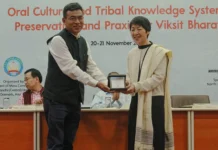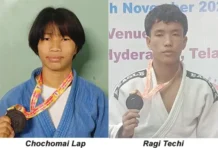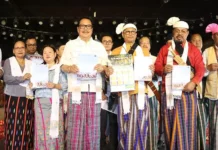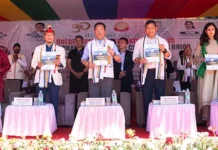[ Rvrw Tungon Dugi ]
In the green expanses of Arunachal Pradesh, and ex-tending into the fertile plains of upper Assam, lives a civilisation as ancient as it is culturally rich: the Tani tribes. This indigenous collective, comprising the Tagin, Nyishi, Adi, Galo, Apatani, and Mising communities, has long been connected by a shared ancestry, though modern identity often presents them as separate.
Oral traditions passed down meticulously through generations trace the origin of all Tani tribes to Abotani, the common forefather whose teachings form the philosophical foundation of the Donyi-Polo belief system. For centuries, these tribes lived across the Siang and Subansiri valleys not as strangers, but as kin. Their worldview emphasised harmony with nature, community cooperation, and moral reciprocity – principles that shaped their social structure and identity.
Shifting identities in the modern era
With the advent of modern administration, the landscape of identity has transformed. Political boundaries, census categories, and varying migration patterns have gradually shaped once-unified people into separately named cultural entities. Today, each tribe proudly upholds distinct geographic and cultural identities:
# Tagin in the Subansiri (Sinyik) valleys.
# Nyishi, rooted in the central hill belts from Subansiri (Sinyik) to Kameng.
# Adi and Galo along the Siang river belts.
# Apatani in the Ziro plateau in the central region, and
# Mising in the upper Assam plains.
This recognition has strengthened local governance and political representation, but it has also introduced unintended lines of division. Cultural expressions now differ widely, with festivals such as Si-Donyi Hilo, Nyokum Yullo, Dree, Mopin, and Solung gradually replacing shared ritual traditions. Dialects, clothing, ornaments, and worldviews diverge further as communities adapt to different environments.
Many elders and scholars caution that internal competition for political benefit and resource allocation often highlights differences rather than shared heritage. Such fragmentation may weaken collective influence, making indigenous voices more vulnerable to external pressures.
A growing call for unity
Yet optimism persists. Across Arunachal, a movement towards rediscovering common identity is gaining momentum. Scholars, cultural leaders, and educators emphasise that unity does not require uniformity, and shared ancestry can coexist with cultural uniqueness.
Cross-community cultural exchanges and joint festivals are increasing. Collaborative efforts towards linguistic development aim to standardise scripts and recognise Tani languages within a common linguistic family. Young generations are reviving traditions through literature, music, research, and digital storytelling, while community initiatives work to protect traditional knowledge and land rights.
Standing at a crossroads
As modernisation accelerates, the Tani tribes stand at a defining moment. The question before the Tagin, Nyishi, Adi, Galo, Apatani, and Mising peoples is profound: Will they define themselves by the borders drawn around them, or by the roots from which they all emerged?
The consensus among many thinkers is clear: names may differ, but ancestry is one. If Tani communities choose collaboration over competition and shared destiny over imposed divisions, they will preserve not only their identity but also their cultural strength and collective dignity.
The story of the Tani tribes is far from its conclusion. As they navigate the delicate balance between modern distinctiveness and ancient unity, the hills are watching, and the rivers remember. The next chapter is still being written. (The writer is a research scholar at NIT Arunachal Pradesh.)

